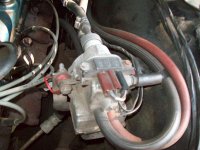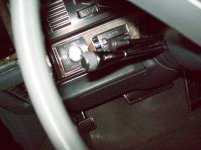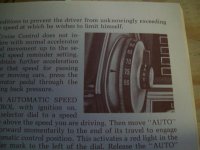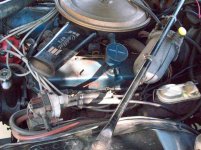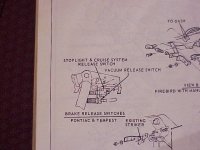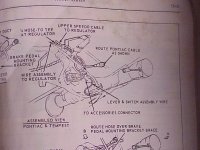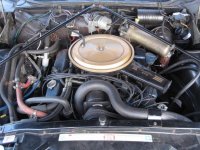Okay, I have a question that is sort of a mystery. My car has cruise control, BUT it is not what is shown in any of my service manuals, or the owner's manual. The transducer looks identical to what is shown, and what GM used that year, but there is where the similarity ends. My car does not have the control on the instrument panel as would be expected, and as is shown in everything that I have ever seen. It has the set button on the end of the turn signal lever, which is NOT shown in anything I have seen or read. The lever looks to be original, as the trim around the end is gray, just like the other levers in the car. Also, I have hunted high and low and found no switch to turn it on or anything. So, any ideas as to why it is so different? I would think that if it was an aftermarket type of thing, that they would have not gone to all the trouble to change the turn signal lever. And, how do you turn it on, or off? See pics below to see what I am talking about.
Pic 1, transducer. Pic 2, turn signal lever with "cruise" written on it and set button on the end (I know its not the greatest pic). Pic 3, the control that was on the '68 cars when they had the cruise option, as shown in the owner's manual and the shop manual.
Pic 1, transducer. Pic 2, turn signal lever with "cruise" written on it and set button on the end (I know its not the greatest pic). Pic 3, the control that was on the '68 cars when they had the cruise option, as shown in the owner's manual and the shop manual.


